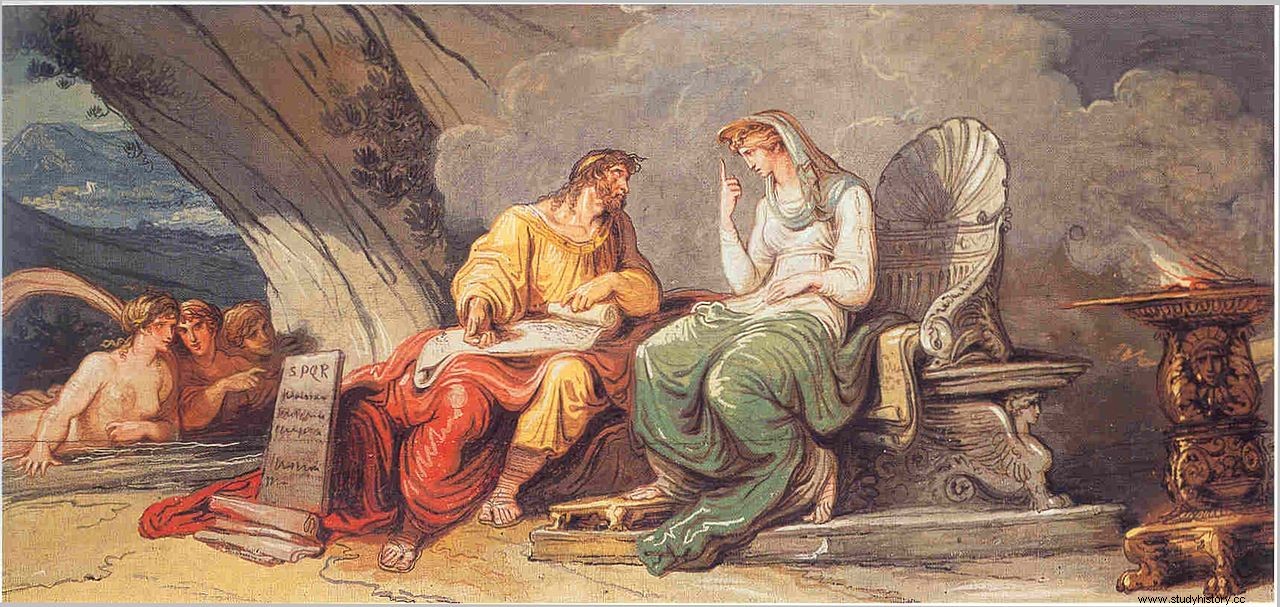
Numa Pompilius consults with the nymph Egeria, who gives him the laws of Rome
Who was Numa Pompilius , second King of Rome and therefore direct successor of the legendary founder of the city Romulus?
What was his personality and what was his political and administrative activity?
Answering these questions is not easy as it is not, after all, for any of the Kings of Rome, because the chronological distance makes their figures inevitably largely hidden by the mists of time, but there is something certain.
Numa Pompilius was born in 754 BC; he was certainly a man of Sabine lineage, since it can be deduced from the presence of him in his name of the Italic-Eastern and Osco-Umbrian root pump.
The election of him, it seems, was due to a choice of the Senate.
Numa's era was marked by great structural changes that ended up changing the face of Rome:this monarch was responsible for the creation of the city's religious and social institutions.
Numa Pompilius was a man of peace, wise and shrewd, animated by a strong religious spirit and prolific legislator:he introduced new forms of priesthood and completely reorganized all sacred practices, instituting new cults and adding solemn holidays to be honored.
Roman historiography of the late Republican age attributes to the second king some of the largest and most famous architectural works of the city, including the first Temple of Janus , which when he had the doors open symbolized war while it meant peace when he closed them, and the new layout of the Temple of Vesta , characterized by the presence of sacred fire and the priesthood of vestal virgins.
However, the most important aspect of the entire reign of Numa Pompilius, which lasted 43 years in all, is the total absence of wars that characterized it, a very rare situation in remote times and even more so in the context of warlike Roman history, marred by numerous wars of expansion first and later of defense.
Numa Pompilius died in his eighties in 673 BC. greeted by the affection of the people, grateful to him for the long period of peace and prosperity experienced, so much so that a large and genuinely moved crowd gathered around the coffin on the day of the funeral.
The body of the beloved sovereign was not burned, as usually happened, but buried in a mausoleum on the Janiculum .
